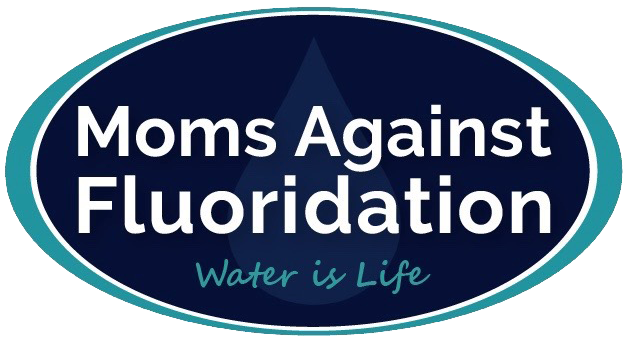BREAKING NEWS:
The Court's ruling is 80 pages in total, and extremely detailed and thorough.We have provided some excerpts and the ruling from the Court.
Here are some notable excerpts and more will be coming:
- p. 2: the Court finds that fluoridation of water at 0.7 milligrams per liter (“mg/L”) – the level presently considered “optimal” in the United States – poses an unreasonable risk of reduced IQ in children.
- p.2: "This order does not dictate precisely what that response must be. Amended TSCA leaves that decision in the first instance to the EPA. One thing the EPA cannot do, however, in the face of this Court’s finding, is to ignore that risk."
- Pg 6. Lines 13-16 “In all, there is substantial and scientifically credible evidence establishing that fluoride poses a risk to human health; it is associated with a reduction in the IQ of children and is hazardous at dosages that are far too close to fluoride levels in the drinking water of the United States.”
- Pg 6. Lines 23-26 “Thus, the Court finds Plaintiffs have met their burden in establishing, by a preponderance of the evidence, that community water fluoridation at 0.7 mg/L presents an unreasonable risk of injury to health under Amended TSCA and that the EPA is thus obliged to take regulatory action in response.”
- Pg 15. Lines 7-10 “Key finding
- The hazard identification step of the hazard assessment here is satisfied; exposure to the
- chemical fluoride is associated with the adverse effect of reduced IQ in children, and particularly in boys.”
- p. 77: The scientific literature in the record provides a high level of certainty that a hazard is present; fluoride is associated with reduced IQ. There are uncertainties presented by the underlying data regarding the appropriate point of departure and exposure level to utilize in this risk evaluation. But those uncertainties do not undermine the finding of an unreasonable risk; in every scenario utilizing any of the various possible points of departures, exposure levels and metrics, a risk is present in view of the applicable uncertainty factors that apply.
- p. 78: There is significant certainty in the data set regarding the association between fluoride and reduced IQ. Namely, there is a robust body of evidence finding a statistically significant adverse association between fluoride and IQ. A large majority of the 72 epidemiological studies assessed by the NTP Monograph observed this relationship including all but one of the 19 high-quality studies, see ¶¶ 34-36, and literature published after the NTP Monograph cutoff date observed the same relationship, see ¶ 37 – and countervailing evidence, for various reasons described previously, are of little impact on this repeated, and consistently observed association between fluoride and reduced IQ, see ¶ 39. Moreover, complete consistency amongst studies is not expected. See Dkt. No. 414, Feb. 9, 20240, Trial Tr. at 1172:23-1173:6 (Savitz). Notably, notwithstanding inherent difficulties in observing this association at lower exposure levels, studies assessing such levels still observed a statistically significant relationship between fluoride and reduced IQ. See ¶¶ 42-44. Again, to put the breadth of evidence supporting this finding in perspective, the EPA has identified a LOAEL based upon far less in other contexts. For instance, in the EPA’s risk evaluation of Methylene, conducted pursuant to Amended TSCA, the EPA used a LOAEL for developmental neurotoxicity, derived from the analysis of one study conducted upon mouse pups (Fredriksson et al., 1992). See Methylene Risk Evaluation at 262. Compare this with 6 (water fluoride) and 9 (urinary fluoride), high-quality, epidemiological studies of human populations underling the 4 mg/L LOAEL underlying the POD here. Dkt. No. 431-2, Trial Ex. 68 at 39, 41 (eTable 4). The scientific literature in the record provides a high level of certainty that a hazard is present; fluoride is associated with reduced IQ. The qualitative evidence is superior.
- p. 76: The size of the affected population is vast. Approximately 200 million Americans have fluoride intentionally added to their drinking water at a concentration of 0.7 mg/L. See Dkt. No. 421 at 206-07 (undisputed). Other Americans are indirectly exposed to fluoridated water through consumption of commercial beverages and food manufactured with fluoridated water
- p. 76: Approximately two million pregnant women, and over 300,000 exclusively formula-fed babies are exposed to fluoridated water. The number of pregnant women and formula-fed babies alone who are exposed to water fluoridation each year exceeds entire populations exposed to conditions of use for which EPA has found unreasonable risk; the EPA has found risks unreasonable where the population impacted was less than 500 people.
- IV. CONCLUSIONS OF LAW
- 121. Plaintiffs have proven, by a preponderance of the evidence, that water fluoridation at the level of 0.7 mg/L – the prescribed optimal level of fluoridation in the United States – presents an “unreasonable risk of injury to health or the environment, without consideration of costs or other non-risk factors, including an unreasonable risk to a potentially exposed or susceptible subpopulation under the conditions of use.” 15 U.S.C. § 2620(b)(4)(B)(ii).
- 122. The Court thus orders the Administrator to initiate rulemaking pursuant to Subsection 6(a) of TSCA. See id. §§ 2605(a), 2620(a)
- The Clerk of Court is directed to enter judgment in Plaintiffs’ favor.
- IT IS SO ORDERED. Dated: September 24, 2024

